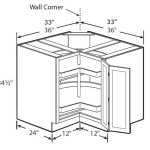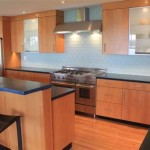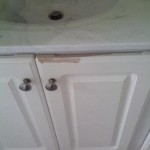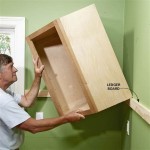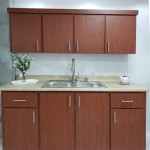Repair Broken Kitchen Cabinet: A Comprehensive Guide
Kitchen cabinets are essential components of every kitchen, providing storage and organization for your utensils, dishes, and other items. However, with constant use and wear and tear over time, these cabinets can become damaged. If you find yourself with a broken kitchen cabinet, don't worry – it's a common problem that can be easily resolved.
In this guide, we'll walk you through the essential aspects of repairing a broken kitchen cabinet, including:
- Identifying the type of damage
- Gathering the necessary tools and materials
- Fixing the damage
- Tips for preventing damage in the future
Whether you're a seasoned DIYer or a complete novice, you'll find all the information you need to restore your kitchen cabinet to its original condition.
Identifying the Type of Damage
The first step in repairing a broken kitchen cabinet is to identify the type of damage. This will help you determine the right tools and materials to use.
Some of the most common types of cabinet damage include:
- Loose hinges
- Cracked or broken doors
- Scratches or dents
- Water damage
Once you know the type of damage, you can start gathering the necessary tools and materials.
Gathering the Necessary Tools and Materials
The tools and materials you'll need will vary depending on the type of damage. However, some general items that you may need include:
- Screwdriver
- Hammer
- Clamps
- Wood glue
- Sandpaper
- Paint or stain (if necessary)
It's always a good idea to have a variety of tools on hand so that you're prepared for any type of repair.
Fixing the Damage
Once you have the necessary tools and materials, you can start fixing the damage.
Here are some general tips for fixing different types of cabinet damage:
- Loose hinges: Tighten the screws on the hinges using a screwdriver.
- Cracked or broken doors: If the damage is minor, you can try repairing it with wood glue. For more severe damage, you may need to replace the door.
- Scratches or dents: Small scratches can be sanded out. For deeper scratches or dents, you can use wood filler to fill them in.
- Water damage: If the damage is minor, you can try drying it out with a fan or hair dryer. For more severe damage, you may need to replace the affected parts of the cabinet.
Always follow the instructions on the product label when using adhesives or other repair materials.
Tips for Preventing Damage in the Future
Once you've repaired your broken kitchen cabinet, you can take steps to prevent damage from occurring in the future.
- Avoid overloading your cabinets.
- Don't open or close the doors too forcefully.
- Use coasters or placemats to protect the surface of the cabinets from scratches or dents.
- Clean your cabinets regularly with a mild soap and water solution.
By following these tips, you can keep your kitchen cabinets looking their best for years to come.

How To Repair A Cabinet Door My Weathered Home

Discover Everything You Need To Know About Cabinet Repair

How To Repair Re A Broken Cabinet Door Fix With Glue And Stain

How To Repair A Broken Cabinet Door The Rta

What To Do When Your Cabinets Are Damaged Beyond Repair

Broken Cabinet Door Repair How To Quickly Fix A Ed Or Split By Diynate

Kitchen Hinge Fix

How To Repair Damaged Kitchen Cabinet Doors Handhills Cabinets
How To Repair A Broken Cabinet Ifixit Guide
How To Repair A Broken Cabinet Ifixit Guide
Related Posts


